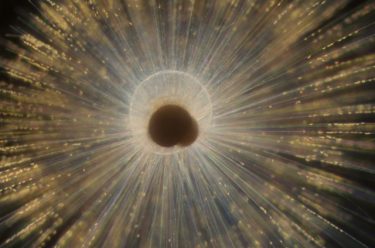
Unseen out in the ocean, countless single-celled organisms grow protective shells to keep them safe as they drift along, living off other tiny marine plants and animals. Taken together, the shells are so plentiful that when they sink they provide one of the best records for the history of ocean chemistry.
Oceanographers at the University of Washington, the University of California, Davis and the Pacific Northwest National Laboratory have used modern tools to provide an atomic-scale look at how that shell first forms. Results could help answer fundamental questions about how these creatures grow under different ocean conditions, in the past and in the future. The study is published this week in the Proceedings of the National Academy of Sciences.
“There’s this debate among scientists about whether shelled organisms are slaves to the chemistry of the ocean, or whether they have the physiological capacity to adapt to changing environmental conditions,” said co-lead author Alex Gagnon, a UW assistant professor of oceanography.
The new work shows, he said, that they do exert some biologically-based control over shell formation.
Read more at UW Today »
